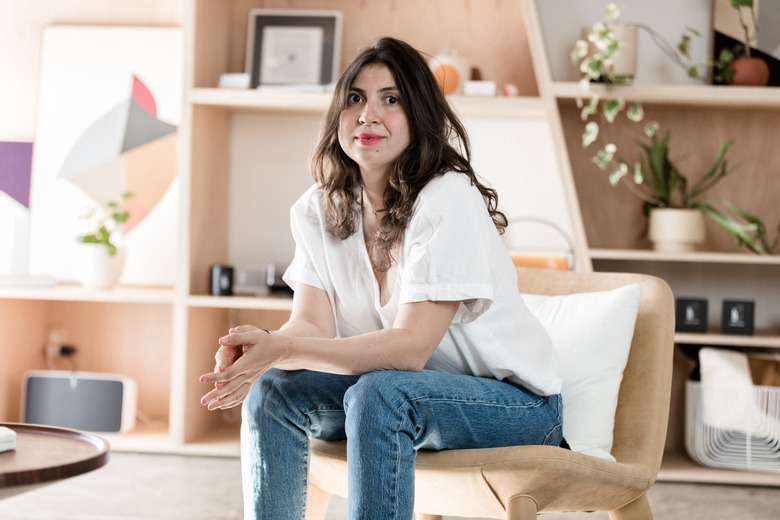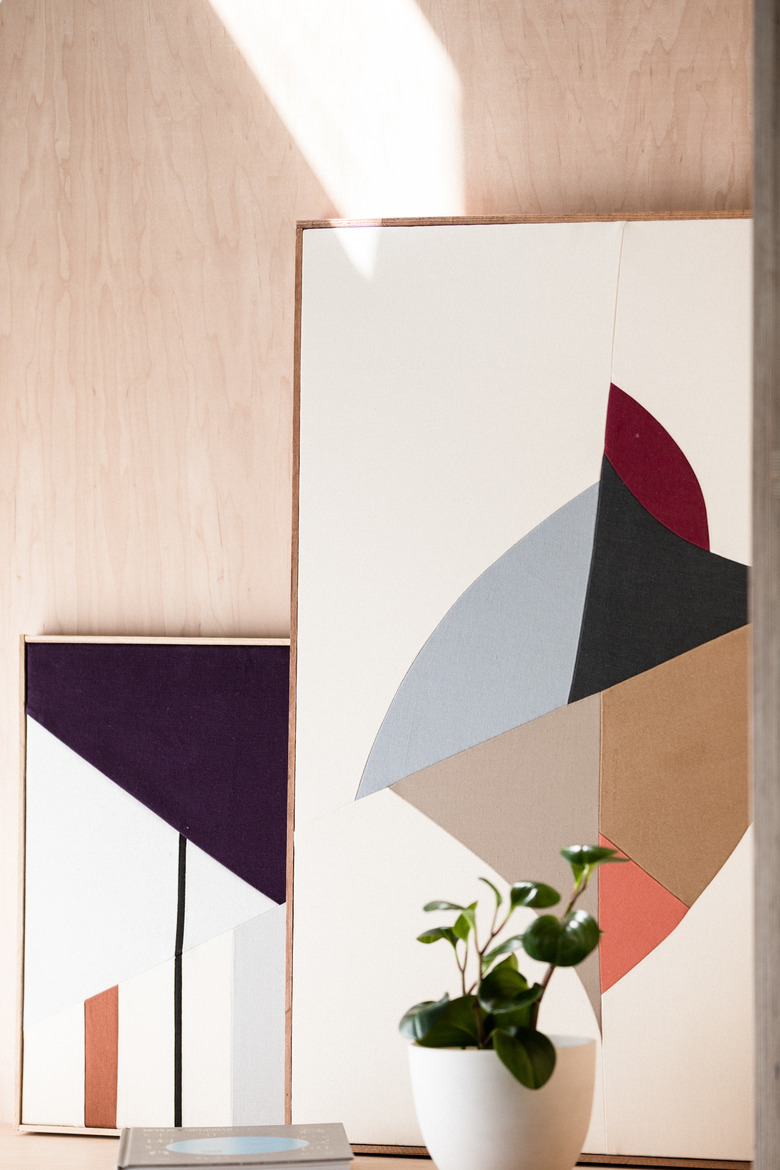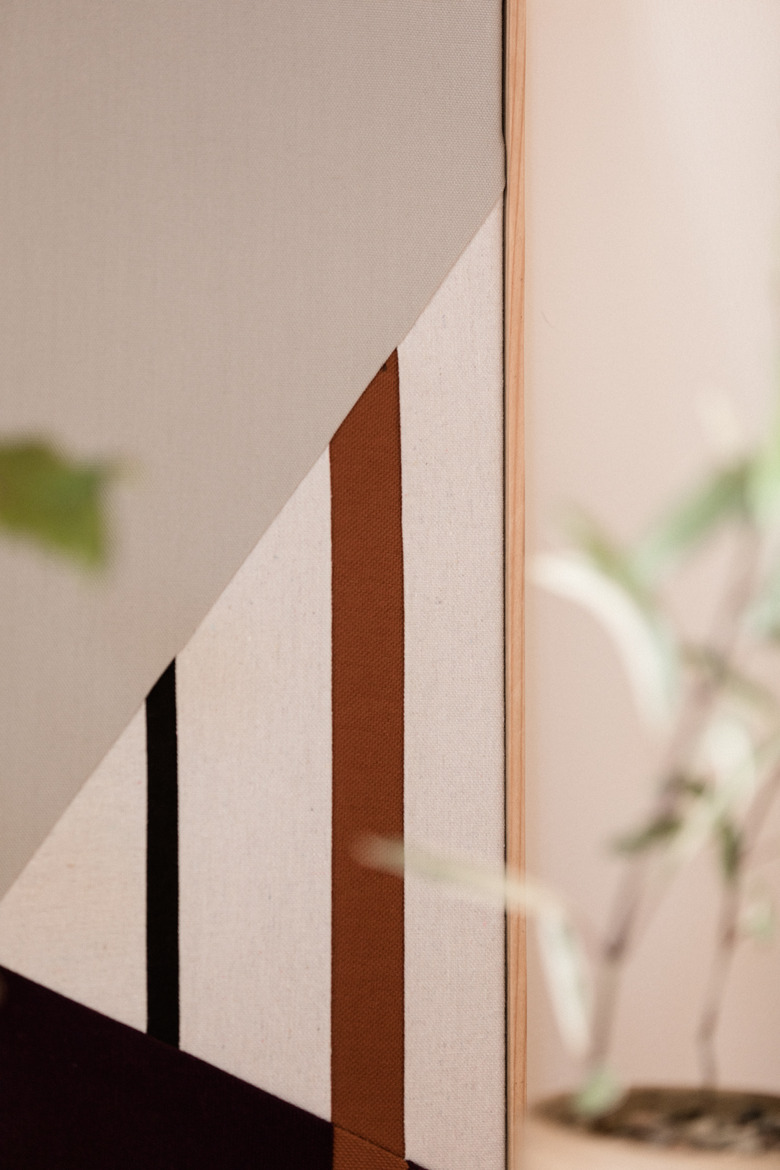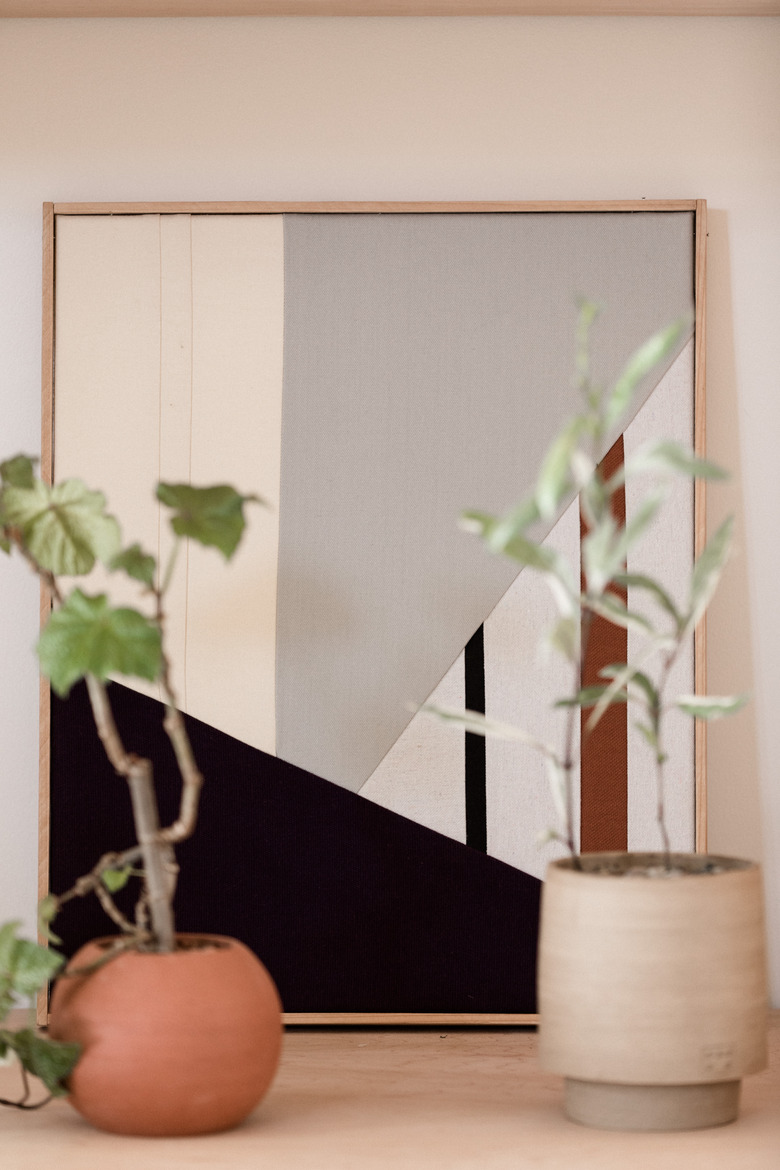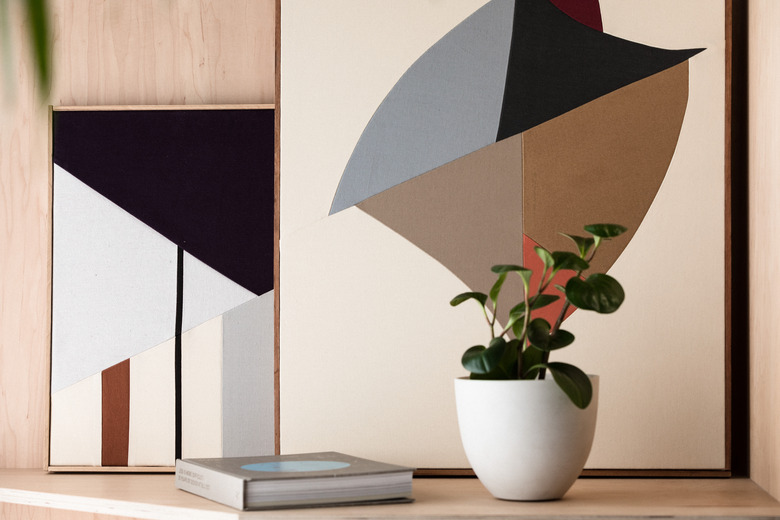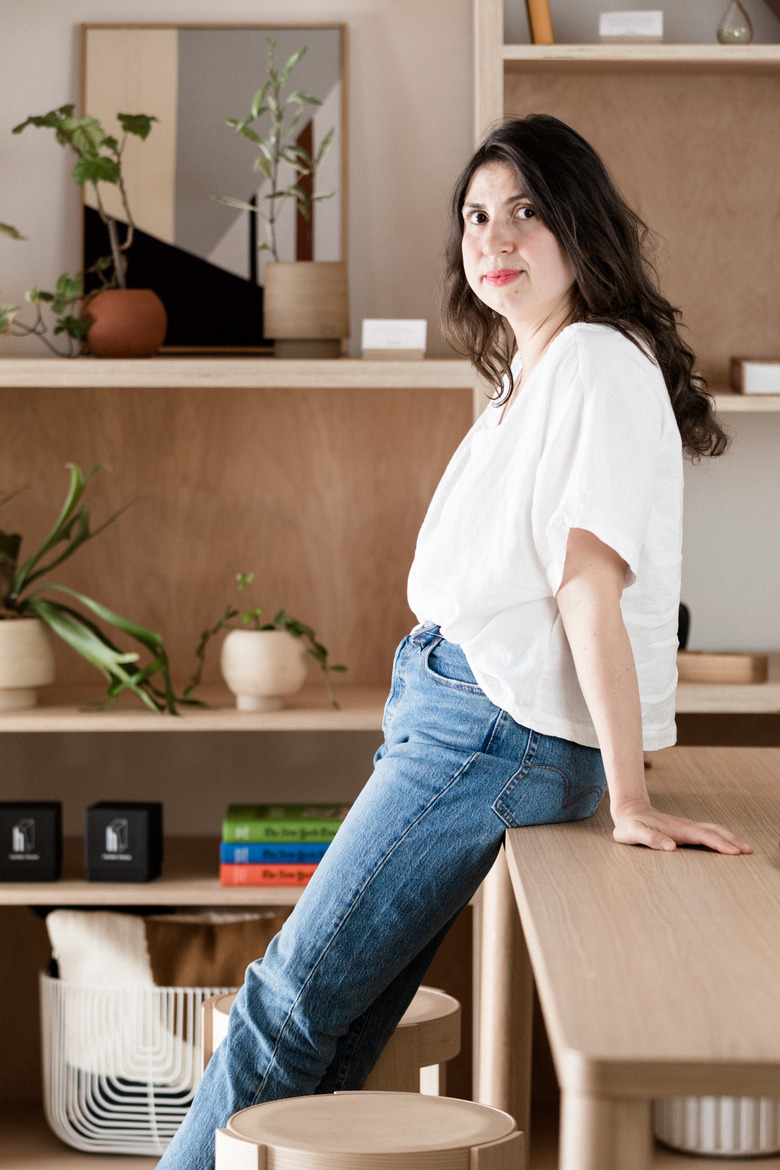In Conversation With Meike Legler, Featured Artist At Hunker House
When textile artist Meike Legler first came to Los Angeles, from her native Germany, she had no intention of making art. And yet here she is, less than two years in, with her strong and graphic fabric pieces hanging in the likes of The Jane Club, the Westin in Hapuna Beach, Hawaii, designs by Emily Henderson and other chic homes and galleries across the country.
Now mother to a 7-month-old baby girl, Legler's time in the studio is, understandably, more limited. But her art practice continues to grow and evolve nonetheless.
Here, she talks about her whirlwind art career and the pieces that adorn the Hunker House in Venice, California, where she recently visited.
Hunker: You have three different pieces in the Hunker House, correct?
Meike Legler: There are two small ones, which are kind of a pair. They hang as a diptych. I used basically the same fabrics for the two pieces, and made the composition differently. I thought they have a nice dynamic when you have them next to each other. In the end, it's up the collector.
The diptych has one big title, which consists of two single titles. It's "Time Traveling"/"Back and Forth." They go on their own, but of course they work as one phrase also.
The third piece is called "Two New Moons." I'm basically a little bit obsessed with astrology. I love reading my horoscope — I'm a Leo, with Capricorn rising. Whenever I read about the new moon and all that, I get inspired by the constellations. I thought I would make a cosmic piece without making it obvious.
H: How has motherhood impacted your work.
ML: So far, only that it has slowed my production down a lot. If I'm with her, I still get ideas, I put them on my cell phone or draw in my sketchbook. I certainly have some new ideas. I want to mix more kinds of fabrics, to mix shiny surfaces with furry surfaces. I'm in the process of looking for those materials, sourcing.
I buy materials that inspire me. In a few months, when I have the time again, I'll get to my working table again and roll up my sleeves. Unless of course there is a commission ...
H: Where the Hunker House pieces commissions? They fit so seamlessly into the space.
ML: Those were pieces that I had made on my own. They ended up with Hunker's sister brand, Saatchi Art.
I was there a few days ago. It's always so beautiful to see them in a real house. I see them in studio — it's different. They blended beautifully into the shelves. The colors were great with the other objects and books.
H: Is that palette representative of your work?
ML: Luckily, all my work looks very different. I have muted colors, but I love bright colors. It depends on my mood, and what I feel like doing. It could be something black and white or super colorful.
H: Does it all start with the fabric?
ML: Sometimes it starts with the fabrics, yes. I see fabrics at a store or at the thrift store, then I gather a few different tones, look at colors, and get inspiration for a composition. I sit on the sofa, closing my eyes a little. I see with my inner eye how a new piece can look. Then I try to draw as accurately as possible. It's OK if it gets lost in translation a bit — the vision is the first step.
H: So I imagine that there are certain themes, or time periods, in your body of work, based on the fabrics you're using at the time?
ML: Sure. There are some fabrics that I can't get more of — dead stock or if I got it as a gift. And then there are some basic fabrics. It's true, there are these timelines sometimes.
But, you know, I really only started making art in 2017. I studied to be a fashion designer and stylist, then we moved to L.A. from Berlin. I took fabric with me that was too precious to give away or sell. For a little while they were on the shelves — I was busy working a job — and then I got back on the sewing machine again. I wanted to do something I hadn't done before. I thought, why can't I sew a picture? It's a painting, but sewn and stretched over a frame. I started with a tiny piece, 9 by 11 inches — super small. I thought, it works, it's fun, so I made more and more and more. Now, my largest is 48 by 60. As soon as I have a studio, it would be nice to go even larger.
H: What's interesting is, in fashion, as well as the art you make, the skillset is roughly the same.
ML: That's the craft I learned, yes. I'm applying it for a different thing now.
H: Did your taste in fashion inform your work?
ML: A little bit, yes. When you look at my oldest works, the small pieces in 2017 and 2018, I only used very geometric and straight lines. No curves. No organic shapes. I was interested in menswear. I never made feminine clothes. Maybe it was more unisex. That was the starting point.
Once I did that, and I felt things became easier, I ventured out to explore more organic and more feminine shapes. It's all a big transition. Every artist goes through that. When you look at any artist's work, over say 10 years, you see this nice transition.
H: How has being in California inspired you?
ML: I would say, I was just inspired to do something different. I knew at this point that I didn't want to work in the fashion industry. The great thing about California, or maybe the U.S. in general, is that you can kind of do whatever you like, or call yourself whatever you want. Germany is more restrictive. I would say the move gave me the courage to just ... do it.
H: What does it mean to be a fabric artist right now?
ML: You know, I'm not the only fabric artist out there, but there are still not that many. When you see a piece in person, and see how the fabric and materials have changed their function, the feeling is very even and very calming.
This interview has been edited for length and clarity.
You can see Mieke Legler's work online at Saatchi Art and on h__er website.
